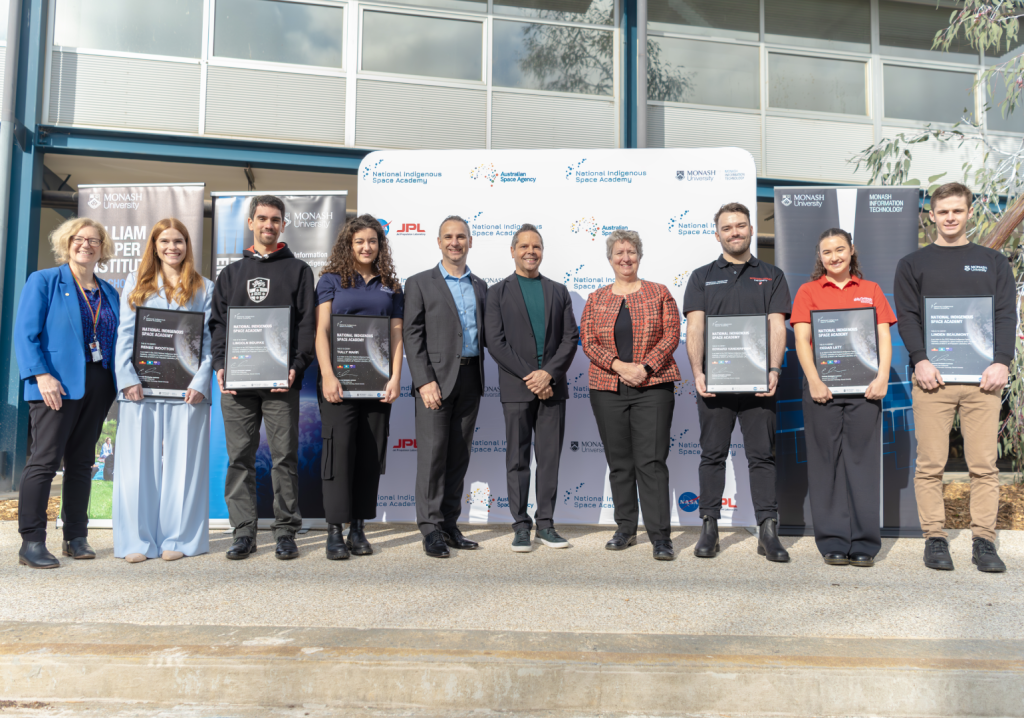Tully Mahr took to the sky for her first solo flight when she was just 15. Now, she is aiming for much higher altitudes.
Engineers Australia student member Tully Mahr has just landed in the US to take part in a NASA internship via Monash University’s National Indigenous Space Academy (NISA), supported by the Australian Space Agency.
The Gundungurra woman will join four other Australian engineering students for 10 weeks at NASA’s Jet Propulsion Laboratory (JPL) in California, where they will work on projects including the design of ocean exploration vehicles and the characterising of microorganisms within the International Space Station.
Shooting for the stars
Mahr, who is currently studying a Master of Mechanical Engineering at the University of Melbourne, said she always wanted a career in STEM – ideally to one day become an astronaut.
“I have always been captivated by the sheer vastness and mystery of the universe; that there existed unknowns that would challenge our current understanding of the world we live in,” she told create.
“I am curious about space exploration, life beyond Earth and the fundamental workings of the universe. I love the complex challenges that are provided by space exploration. It is the cutting-edge of our understanding and presents many opportunities for innovation and collaboration.
“Space exploration is the pinnacle of our technological achievements as a human race, and I have always aspired to be a part of a mission that unites people in the pursuit of shared aspirations.”
Still, applying for the internship was not without its challenges. In particular Mahr said she learned the importance of self-belief.
“During the application process, I found myself having to shift my perspective from ‘Maybe I am not qualified enough’ to ‘My journey is a progression of learning and growth, not an instant transformation into an expert’,” she explained. “Instead of focusing on what I perceived to be my shortcomings, I focused on my strengths, the unique experiences that have shaped me and the potential I have to contribute to NASA’s mission.”
A new perspective
Wadjak/Ballardong Noongar man and NISA Program Lead Professor Christopher Lawrence CompIEAust said Indigenous Australians were the first scientists, engineers, technologists, mathematicians and doctors.
“This is a pathway for Indigenous students to participate in unique NASA and JPL projects such as robotics for the unexplored ocean worlds, robot perception control, artificial intelligence and path planning as well as satellites,” he said in a media release.
Mahr explained that Indigenous Australians have developed an intricate understanding of their environments built over generations, and that integrating these insights with advanced engineering concepts can lead to more contextually appropriate solutions.
“In my journey, I aspire to work with Indigenous communities to develop projects that encapsulate a bridge between Indigenous wisdom and engineering,” she said. “It’s a way to honour the invaluable heritage of our Indigenous cultures while addressing contemporary challenges through innovation.
“Being an Aboriginal woman in STEM, I understand the importance of diversity in driving innovation. I am committed to promoting inclusivity in STEM, and advocating for initiatives that encourage young girls and Indigenous Australians to explore their passion for science and engineering.
“I am attuned to the unique challenges faced by women and Indigenous Australians in the field, and can contribute to supportive environments and empower individuals to thrive. It is my goal to be a catalyst for change, paving the way for inclusive, culturally sensitive and innovative aerospace solutions that benefit humanity and the planet.”
Lawrence said it would be great to see NASA produce the world’s first Aboriginal astronaut.
The five participants in the internship program were selected on academic merit. Indigenous students across undergraduate and postgraduate levels who identify as Aboriginal or Torres Strait Islander, and are studying a degree in science, technology, engineering or maths at any university in Australia, are eligible.
Bringing skills back to Australia
The internship will develop the students’ skills and knowledge while working on cutting-edge space missions, according to the Head of the Australian Space Agency Enrico Palermo.
“As we continue to grow our space sector here at home, we have an opportunity to do that in a uniquely Australian way by embracing thousands of years of First Nations knowledge in making sense of the land, by looking to the sky,” he said in a media release.
Dean of the University of Melbourne’s Faculty of Engineering and IT Professor Mark Cassidy congratulated Mahr on the internship.
“We are absolutely thrilled for Tully – she is a trailblazer for diversity in STEM and the world would benefit more from talented people like her,” he said. “She is an inspiration to her peers and will no doubt become a role model for many more Indigenous engineers, and hopefully others with diverse backgrounds.”
In the meantime Mahr will be conducting her internship in the Origins and Habitability Laboratory at JPL.
“My work will involve a mineralogical analysis of compositional gradients in hydrothermal chimneys, which are a key analogue for a variety of planetary bodies in our solar system and a way we can understand the Early Earth and origins of life,” she said.
